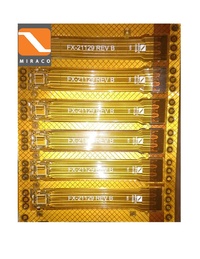
Photo from wikipedia
The current best performing p-type transparent conducting oxides are typically highly crystalline materials, deposited at high temperatures, and hence incompatible with the drive to low cost flexible electronics. We investigated… Click to show full abstract
The current best performing p-type transparent conducting oxides are typically highly crystalline materials, deposited at high temperatures, and hence incompatible with the drive to low cost flexible electronics. We investigated a nanocrystalline, copper deficient CuxCrO2, deposited at low temperatures upon a flexible polyimide substrate. The as-deposited film without post annealing has an electrical conductivity of 6Scm−1. We demonstrate that this p-type transparent oxide retains its excellent electrical conductivity under tensile strain, withstanding more than one thousand bending cycles without visible cracks or degradation in electrical properties. In contrast, compressive strain is shown to lead to an immediate reduction in conductivity which we attribute to a de-lamination of the thin film from the substrate.The current best performing p-type transparent conducting oxides are typically highly crystalline materials, deposited at high temperatures, and hence incompatible with the drive to low cost flexible electronics. We investigated a nanocrystalline, copper deficient CuxCrO2, deposited at low temperatures upon a flexible polyimide substrate. The as-deposited film without post annealing has an electrical conductivity of 6Scm−1. We demonstrate that this p-type transparent oxide retains its excellent electrical conductivity under tensile strain, withstanding more than one thousand bending cycles without visible cracks or degradation in electrical properties. In contrast, compressive strain is shown to lead to an immediate reduction in conductivity which we attribute to a de-lamination of the thin film from the substrate.
Journal Title: AIP Advances
Year Published: 2018
Link to full text (if available)
Share on Social Media: Sign Up to like & get
recommendations!